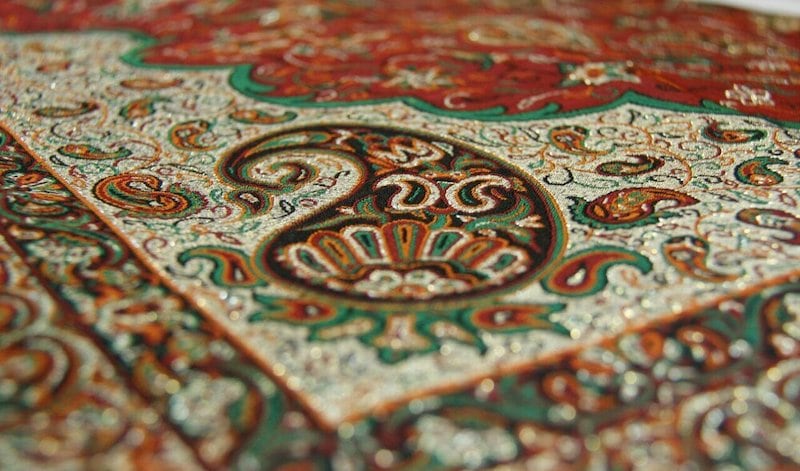Termeh is a fine and precious handmade cloth with traditional patterns or textures made of wool and high-quality natural or synthetic silk with tall fibers.
Although some believe that the origin of Termeh is the heart of Central Asia and Kashmir highlands, some others believe that weaving Termeh has originated in Iran and then found its way to Kashmir.
However, weaving Termeh was developed and became popular in the early Safavid period in Isfahan, and its excelling evolution took place in the reign of Shah Abbas Safavid and became one of the Iranian exportable products.
Taste and initiative of Iranians in the weaving delicacy, material, and fantastic schemes of this handicraft is unique; therefore, one of the important duties and barriers of the weaver of Termeh is on choosing and matching the colors as this matching is done whether by choosing harmonious colors or even by choosing contrasting colors in a particular form which can represent kind of congruity and beauty and it is considered as a secret in the Iranian style of weaving Termeh.
In general, the colors for weaving Termeh, and especially colors used for its texts, consist of natural herbal colors as well as natural materials in colors like dark red, light red, green, orange, and black; and, the patterns generally include various traditional curved patterns and schemes.
This delicate and fine cloth had been used for different occasions such as sewing aristocratic and noble clothes, curtains, prayer rugs, and robe, and were worn mainly by people from noble, aristocratic, and monarchal classes, in the past times; however, in the present time, most of the upper- and middle-class people offer it to each other as gifts in weddings, eves, and official or family occasions, and is sometimes used as furniture cloth or table cloth.
Nowadays, Termeh craft which is being forgotten is mainly woven in Yazd province, central Iran.
Designs of Persian Termeh
Termeh is a valuable textile and has many different usages. So it is woven on different sizes and shapes such as 150*150 or 100*100 centimetres for table cloth and wrapper.
1 – A checked pattern which is like a bee’s hive and is used for a tablecloth.
2 – A striped pattern which is of two models: narrow and wide stripped.
3 – Atabaki pattern which was one of the Kashmiri’s Termeh used for expensive fabric because it was a finely woven Termeh. Usually, nobles and aristocrats used it as costly and nice cloth.
4 – Zomorrodi pattern in which the green colour was used more than the others.
5- Kashmiri pattern (cashmere) in which the shape of deer’s horn was used for its design.





















